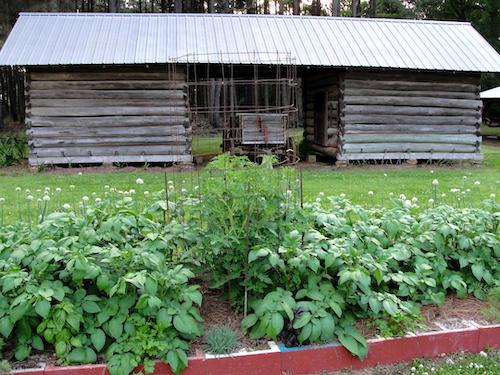
“Irish” potatoes are easy and productive if planted now.
February 18, 2024 - Mark it on your calendars for either Valentine’s Day (if you truly love potatoes) or President’s Day (if you think growing your own potatoes should be a law). I vote for both and put mine in the ground this weekend.
Potatoes are cool-weather plants that bloom and die when the temperatures get hot. They can tolerate light frosts but not hard freezes and are mostly planted as a spring crop in East Texas. They should be planted about four weeks before the last expected frost (February). For many, Valentine’s Day (or President’s Day) is potato planting day. Potatoes are planted from small potatoes or pieces of larger potatoes known as “seed potatoes.” Certified seed potatoes are sold at most East Texas feed stores and some nurseries and garden centers. They should be spaced 8 to 12 inches apart.
Potatoes require at least eight hours of direct sun each day for maximum yields. Like most root crops, they do best in well-drained sandy and loamy soils and are best planted in raised beds or rows at least 6 to 12 inches high. Ideally, till in several inches of compost or organic matter and incorporate 2 pounds of a complete lawn fertilizer (15–5–10, 18-6-12, etc.) per 100 square feet of bed or every 35 feet of row before planting. In smaller plantings use 2 teaspoons per square foot or foot of row. A comparable organic fertilizer would work as well. The ideal soil pH for growing potatoes is 5.0 to 6.5.
Potatoes can be grown in raised beds or raised rows 6 inches high, 18 inches wide, and 36 inches apart. Use your hoe to open up a furrow 3 inches deep down in the row. Place the seed pieces or small potatoes in the bottom of the furrow. Cover them with well-cultivated soil and gently firm them in with the back of your hoe. They can also be grown in whiskey barrel sized (30 gallon or larger) containers of potting soil.
Potatoes are relatively easy to grow, provided they have lots of sunshine and cool temperatures. Around three to four weeks after planting or when the plants are 6 inches tall, use your hoe or shovel to apply about 3 to 4 inches of dirt or compost to the bases of the plants. This creates a desirable area for the potatoes to form in. Ideally, apply a layer of organic mulch (hay, straw, grass clippings, compost, etc.) to conserve water and prevent weeds. The main pest on potatoes is the potato bug that eats the foliage so scout daily. Handpick them or apply an appropriately labeled pesticide following all label directions.
Potatoes are usually ready to harvest 90 to 120 days after planting. Spring-planted plants indicate when they are ready to harvest as the tops turn yellow and start to die. I usually start sneaking some tender “new potatoes” as soon as the plants start blooming by gently probing beneath them with my fingers. Be careful not to disturb the root system, and always remember your production will be greater if you leave them alone until they are mature. I can’t help myself though. If you are going to consume the final crop rather quickly, dig them with a spading fork and wash them before storing in a cool, humid, dark place. If you want to store them for a longer period, cut the tops off the dying plants and leave the potatoes in the ground for three to four days. This will toughen the skins and make the potatoes last longer.
Recommended potato varieties for Texas include ‘Kennebec’ (white), ‘Pontiac’ (red), ‘Red Lasoda’ (red), and ‘Norland’ (red). Potatoes are native to South America, not Ireland.
For more information on growing potatoes at home, see the Easy Gardening publication on “potatoes” on our Aggie Horticulture website.
Greg Grant is the Smith County horticulturist and Master Gardener coordinator for the Texas A&M AgriLife Extension Service. He is the author of Texas Fruit and Vegetable Gardening, Texas Home Landscaping, Heirloom Gardening in the South, and The Rose Rustlers. You can read his “Greg’s Ramblings” blog at arborgate.com, read his “In Greg’s Garden” in each issue of Texas Gardener magazine (texasgardener.com), or follow him on Facebook (“Greg Grant Gardens”) and Instagram (“ggrantgardens”). More science-based lawn and gardening information from the Texas A&M AgriLife Extension Service can be found at aggieturf.tamu.edu and aggie-horticulture.tamu.edu.









